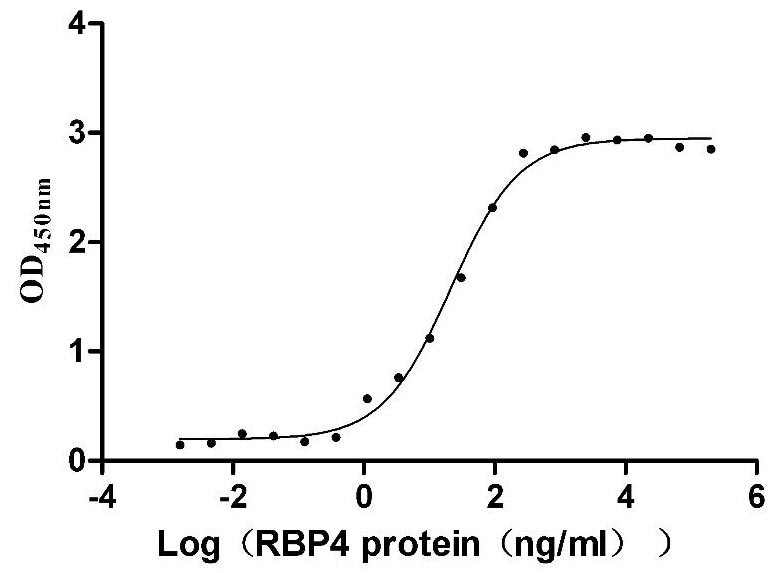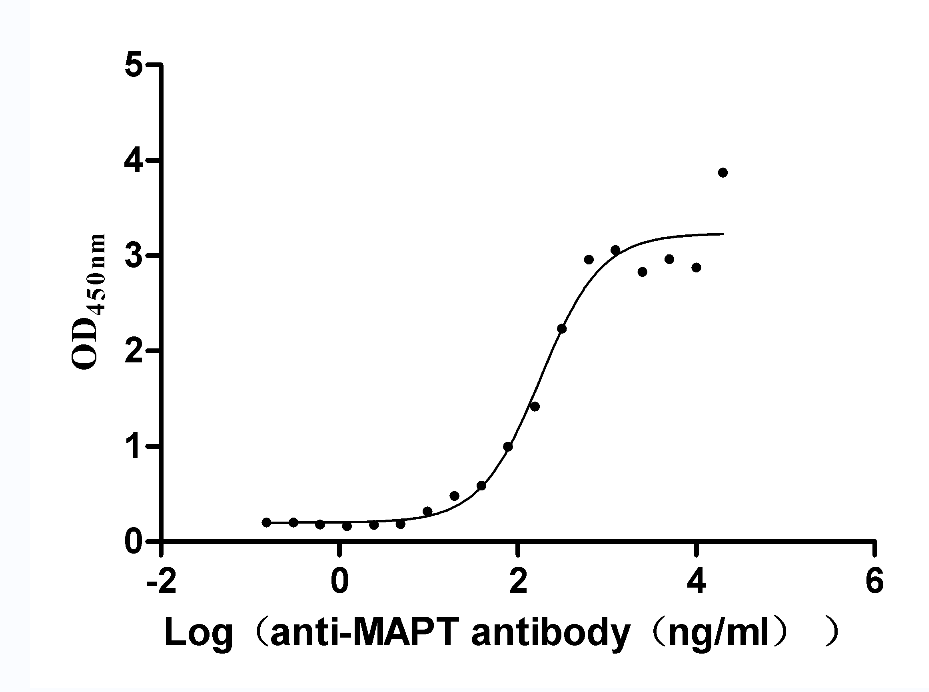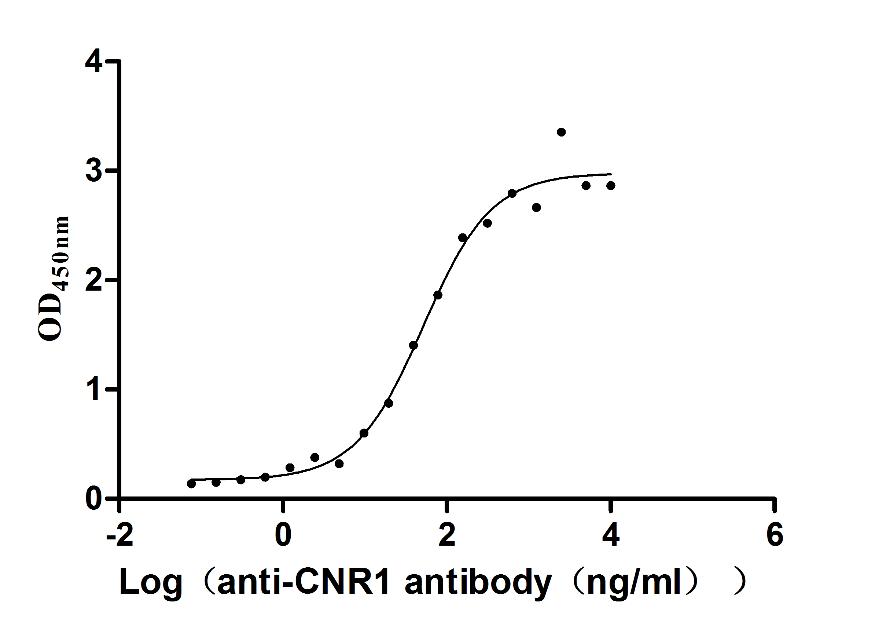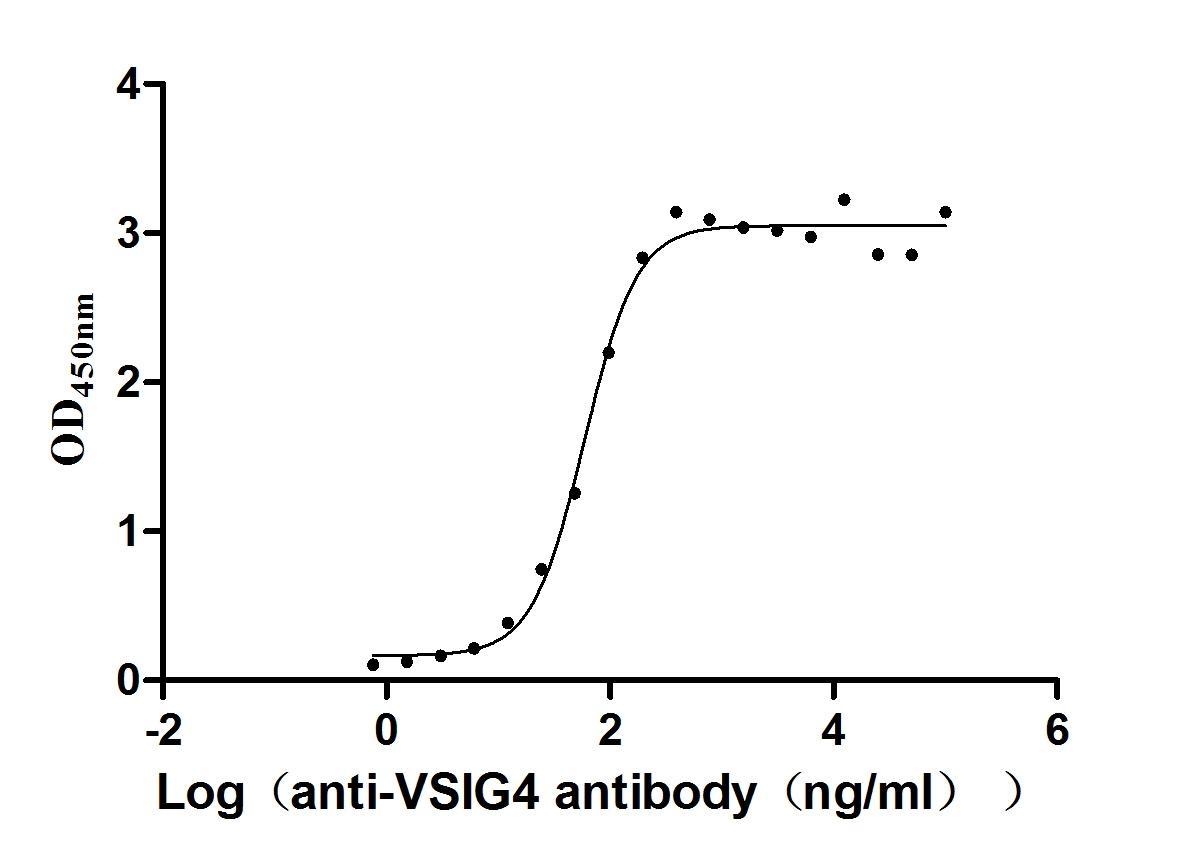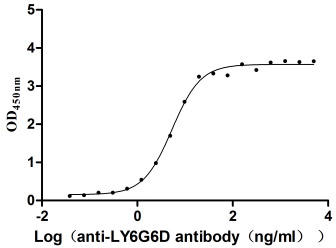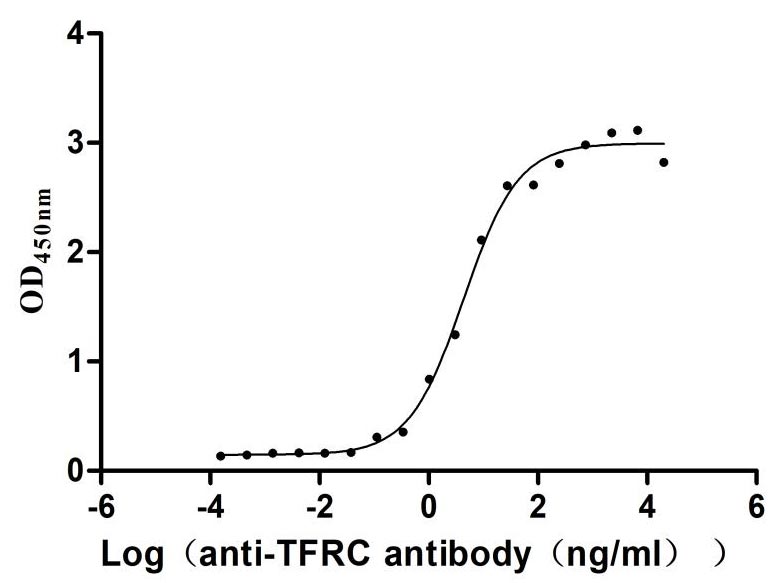Recombinant Mouse Nucleosome assembly protein 1-like 1 (Nap1l1)
-
中文名稱:小鼠Nap1l1重組蛋白
-
貨號:CSB-YP015441MO
-
規格:
-
來源:Yeast
-
其他:
-
中文名稱:小鼠Nap1l1重組蛋白
-
貨號:CSB-EP015441MO
-
規格:
-
來源:E.coli
-
其他:
-
中文名稱:小鼠Nap1l1重組蛋白
-
貨號:CSB-EP015441MO-B
-
規格:
-
來源:E.coli
-
共軛:Avi-tag Biotinylated
E. coli biotin ligase (BirA) is highly specific in covalently attaching biotin to the 15 amino acid AviTag peptide. This recombinant protein was biotinylated in vivo by AviTag-BirA technology, which method is BriA catalyzes amide linkage between the biotin and the specific lysine of the AviTag.
-
其他:
-
中文名稱:小鼠Nap1l1重組蛋白
-
貨號:CSB-BP015441MO
-
規格:
-
來源:Baculovirus
-
其他:
-
中文名稱:小鼠Nap1l1重組蛋白
-
貨號:CSB-MP015441MO
-
規格:
-
來源:Mammalian cell
-
其他:
產品詳情
-
純度:>85% (SDS-PAGE)
-
基因名:Nap1l1
-
Uniprot No.:
-
別名:Nap1l1; Nrp; Nucleosome assembly protein 1-like 1; Brain protein DN38; NAP-1-related protein
-
種屬:Mus musculus (Mouse)
-
蛋白長度:Full Length of Mature Protein
-
表達區域:2-388
-
氨基酸序列ADIDNKEQS ELDQDLEDVE EVEEEETGEE TKIKARQLTV QMMQNPQILA ALQERLDGLV DTPTGYIESL PKVVKRRVNA LKNLQVKCAQ IEAKFYEEVH DLERKYAVLY QPLFDKRFEI INAIYEPTEE ECEWKPDEED EVSEELKEKA KIEDEKKDEE KEDPKGIPEF WLTVFKNVDL LSDMVQEHDE PILKHLKDIK VKFSDAGQPM SFVLEFHFEP NDYFTNEVLT KTYRMRSEPD DSDPFSFDGP EIMGCTGCQI DWKKGKNVTL KTIKKKQKHK GRGTVRTVTK TVSNDSFFNF FAPPEVPENG DLDDDAEAIL AADFEIGHFL RERIIPRSVL YFTGEAIEDD DDDYDEEGEE ADEEGEEEGD EENDPDYDPK KDQNPAEC
-
蛋白標簽:Tag?type?will?be?determined?during?the?manufacturing?process.
The tag type will be determined during production process. If you have specified tag type, please tell us and we will develop the specified tag preferentially. -
產品提供形式:Lyophilized powder
Note: We will preferentially ship the format that we have in stock, however, if you have any special requirement for the format, please remark your requirement when placing the order, we will prepare according to your demand. -
復溶:We recommend that this vial be briefly centrifuged prior to opening to bring the contents to the bottom. Please reconstitute protein in deionized sterile water to a concentration of 0.1-1.0 mg/mL.We recommend to add 5-50% of glycerol (final concentration) and aliquot for long-term storage at -20℃/-80℃. Our default final concentration of glycerol is 50%. Customers could use it as reference.
-
儲存條件:Store at -20°C/-80°C upon receipt, aliquoting is necessary for mutiple use. Avoid repeated freeze-thaw cycles.
-
保質期:The shelf life is related to many factors, storage state, buffer ingredients, storage temperature and the stability of the protein itself.
Generally, the shelf life of liquid form is 6 months at -20°C/-80°C. The shelf life of lyophilized form is 12 months at -20°C/-80°C. -
貨期:Delivery time may differ from different purchasing way or location, please kindly consult your local distributors for specific delivery time.Note: All of our proteins are default shipped with normal blue ice packs, if you request to ship with dry ice, please communicate with us in advance and extra fees will be charged.
-
注意事項:Repeated freezing and thawing is not recommended. Store working aliquots at 4°C for up to one week.
-
Datasheet :Please contact us to get it.
靶點詳情
-
功能:Histone chaperone that plays a role in the nuclear import of H2A-H2B and nucleosome assembly. Participates also in several important DNA repair mechanisms: greatly enhances ERCC6-mediated chromatin remodeling which is essential for transcription-coupled nucleotide excision DNA repair. Stimulates also homologous recombination (HR) by RAD51 and RAD54 which is essential in mitotic DNA double strand break (DSB) repair. Plays a key role in the regulation of embryonic neurogenesis. Promotes the proliferation of neural progenitors and inhibits neuronal differentiation during cortical development. Regulates neurogenesis via the modulation of RASSF10; regulates RASSF10 expression by promoting SETD1A-mediated H3K4 methylation at the RASSF10 promoter.
-
基因功能參考文獻:
- Nap1l1 promotes the proliferation of iPSC attributable to G2/M transition caused by downregulation of p27 and p21, and upregulation of cyclin B1, the activation of AKT or ERK is involved in the process. PMID: 26824453
- The molecular interaction between DGKzeta and Nap1l1 was attenuated after hypoxic stress. PMID: 24893663
- Downregulation of Nap1l1 significantly enhances mesodermal induction and subsequent cardiogenesis of murine induced pluripotent stem cells via inhibition of gamma-secretase-regulated Notch signaling. PMID: 24648372
- Nap1l1 is a novel protein that regulates cardiomyocytes differentiation of P19CL6 cells induced by dimethyl sulfoxide. PMID: 22807403
- Results identified several proteins interacting with NAP1L2, including the ubiquitously expressed members of the nucleosome assembly protein family, NAP1L1 and NAP1L4. PMID: 21333655
顯示更多
收起更多
-
亞細胞定位:Nucleus. Cytoplasm. Melanosome.
-
蛋白家族:Nucleosome assembly protein (NAP) family
-
組織特異性:Highly expressed in the brain (at protein level). High expression in cerebral cortex, not in cerebellar cortex.
-
數據庫鏈接:
Most popular with customers
-
Recombinant Human Pro-neuregulin-1, membrane-bound isoform (NRG1), partial (Active)
Express system: Mammalian cell
Species: Homo sapiens (Human)
-
Recombinant Macaca mulatta Semaphorin-4D isoform 1 (SEMA4D), partial (Active)
Express system: Mammalian cell
Species: Macaca mulatta (Rhesus macaque)
-
Recombinant Mouse Transthyretin (Ttr) (Active)
Express system: Mammalian cell
Species: Mus musculus (Mouse)
-
Recombinant Rat Microtubule-associated protein tau (Mapt) (Active)
Express system: Mammalian cell
Species: Rattus norvegicus (Rat)
-
Recombinant Human Cannabinoid receptor 1 (CNR1)-VLPs (Active)
Express system: Mammalian cell
Species: Homo sapiens (Human)
-
Recombinant Human V-set and immunoglobulin domain-containing protein 4 (VSIG4), partial (Active)
Express system: Mammalian cell
Species: Homo sapiens (Human)
-
Recombinant Macaca fascicularis lymphocyte antigen 6 family member G6D (LY6G6D) (Active)
Express system: Yeast
Species: Macaca fascicularis (Crab-eating macaque) (Cynomolgus monkey)
-
Recombinant Human Transferrin receptor protein 1 (TFRC), partial (Active)
Express system: Mammalian cell
Species: Homo sapiens (Human)


-AC1.jpg)

